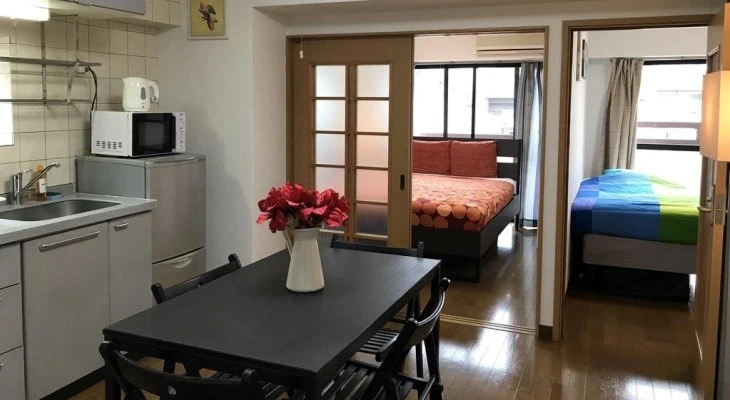With inflation on the rise, the cost of living has skyrocketed across much of the United States and has for some time. In 1980, the average rent would run you $245 a month. In 2020, forty years later, the average rent set you back $1,100 monthly! That is an enormous 350% increase in 40 years.
Many of us are getting married later. Others are worried about how expensive things are. More of us are earning advanced degrees (spending more time in school). With rents continuing to rise, many of us are looking to split the rent or delay moving (if we have a family). But surely there are limits, right?
The answer is yes. Most states have occupancy laws limiting how many people can inhabit a space. Because this can change depending on size, we will look at the maximum occupancy rules for an apartment with two bedrooms.
Table of Contents
The Rules

The Federal Government has a general rule under the Fair Housing Act in the United States. However, there are exceptions to this rule that the law protects explicitly.
According to the Fair Housing Act, the maximum occupancy is to be set by the state, but the rule of thumb is two people for every bedroom in the house. Thus, a two-bedroom apartment will generally have a maximum of four individuals.
Families
The exceptions kick in primarily in family situations. Housing providers cannot legally turn away a family of five for a two-bedroom apartment on the grounds of occupancy.
Landlords and developers may also find themselves in trouble with the Fair Housing Act if they have regulations that make a distinction between families with minor and adult children.
States
States have the right to set their codes independently, and we will look at those below. However, States are advised that any code they enforce may not be discriminatory.
The Fair Housing Act protects prospective renters and home buyers from discrimination from landlords and sellers, but States are welcome to decide what they deem safe and reasonable for occupancy.
California
We’ll look at California as an example of a specific State that has taken its own needs into account. As the country’s largest State, it has a unique set of issues related to housing.
The general rule in California is called “2 plus 1”. That is, every bedroom has a maximum occupancy of two individuals, and then you can add one more person after all the bedroom occupancies are totaled. So, a two-bedroom apartment has a limit of five people in most cases.
Many states with high populations, like New York, Florida, and Massachusetts, have similar 2 plus 1 rules. Most lower-population states like Montana and Kansas follow the Federally prescribed rule of two people per bedroom.
More Specific

Some states have very diverse populations. Texas has a very large population, but many people live outside of urban areas. So the rules are different depending on where you are in Texas.
In Austin, you see a similar 2 plus 1 rule like California. But in a lot of the rest of the state, the cities follow the same Federal law.
Also, there are laws that allow individual landlords to set the occupancy limit for their units. This could come down to a safety issue or how many parties a landlord is comfortable having on one lease. However, they must not set these limits based on discrimination of races, groups, families, etc.
So, the laws and rules are more binding the more personal they are. There is a Federal law that makes a recommendation, a State law that is more binding, a city law in place that is more enforced than that, and finally the say of the landlord, which is the most important as long as they are not discriminating.
Therefore, in New York City, it is possible that one landlord says that their two-bedroom unit is a four-person maximum, and another landlord says that the limit is three or six.
Getting Housing
Wherever you are moving or looking to rent, make sure that you are familiar with any particularities in the law for that city or state. Then, search up the rules that the property manager has set up to check for differences.
In low-population areas, you likely won’t see many landlords or cities that have specific rules past the Federal recommendations. But, in large cities or high population States, more cities and landlords will feel like they need to set different limits.
If you apply and you are denied despite meeting the set by the landlord, remember to consider that in the case of suspected discrimination, you can seek legal action under the Fair Housing Act.
As a general rule, we can lean on the fact that the maximum occupancy for a two-bedroom apartment is four people (or five people in populous states like California and New York), with exceptions.

